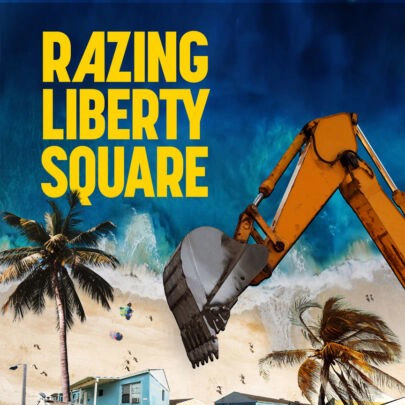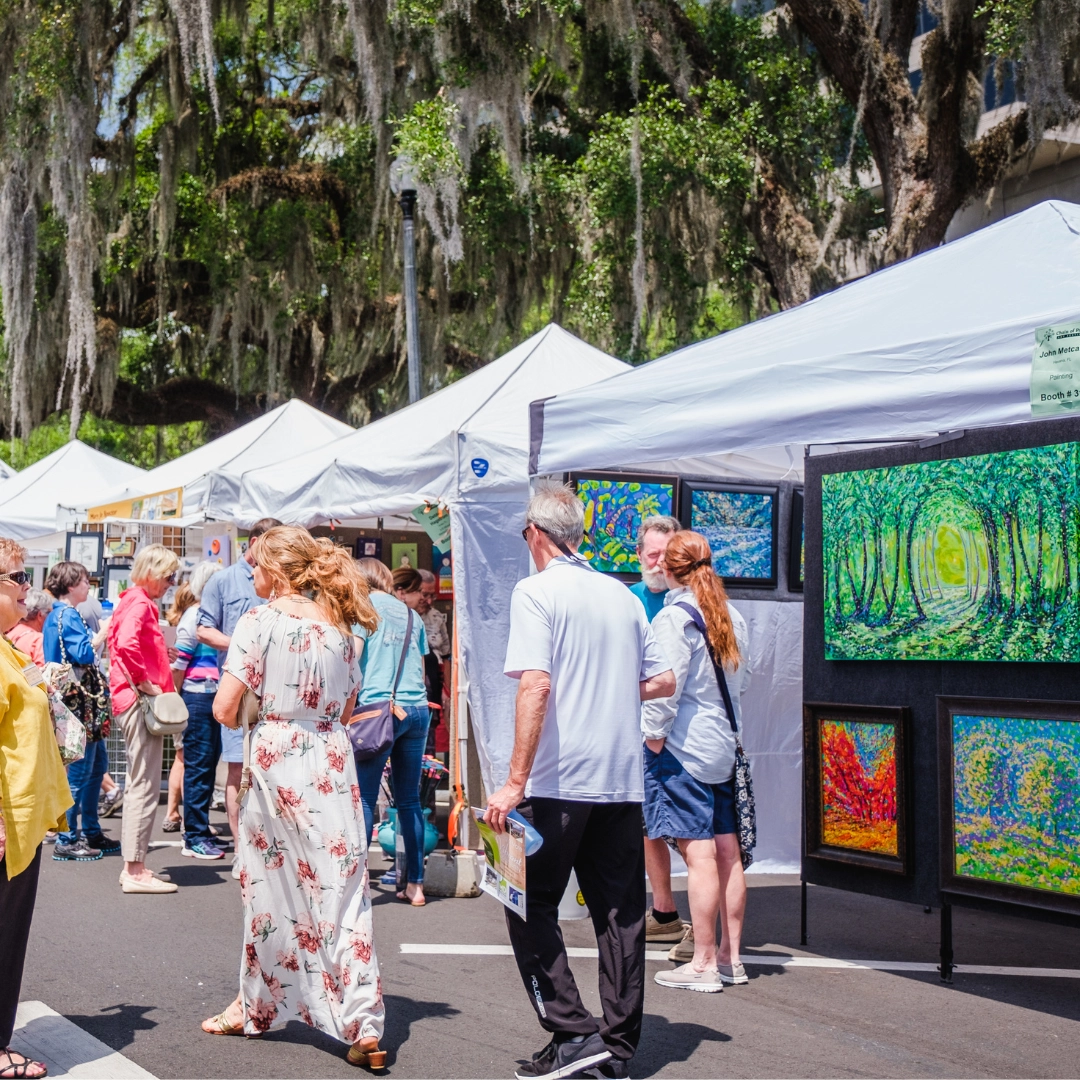by Steve Dollar | May 14, 2021
Barry Jenkins on the Making of “The Underground Railroad”
Filmmaker and FSU alumnus Barry Jenkins’ long-awaited series "The Underground Railroad," based on the book by Colson Whitehead, premieres on Amazon Prime today.

In a time of streaming media meant to be binged and forgotten, a production like The Underground Railroad stands out as a major artistic achievement. More than that, though, this is landmark television for any era. The 10-part series, which launches May 14 on Amazon Prime, is an unflinching adaptation by filmmaker Barry Jenkins of Colson Whitehead’s Pulitzer Prize-winning 2016 novel that tracks the journey of an enslaved Black woman named Cora who flees a Georgia plantation in a quest for freedom. She’s a passenger on the Underground Railroad, which in Whitehead’s alternative vision is a literalized version, represented by an actual train, of the historical network of hidden routes and safe houses that offered passage out of the South in the antebellum era.
Jenkins lavishes the story with a mythic visual texture yet spares none of its horrors, as Cora (Thuso Mbedu) navigates a perilous road out of hell. The Miami native once again works with the team that made the Oscar-winning Moonlight, including fellow Florida State University film school graduates Adele Romanski (executive producer), James Laxton (cinematographer) and Joi McMillion (editor), along with a memorable cast.
Jenkins joined cast members recently to talk about The Underground Railroad in an online press conference with journalists nationwide. Below are some of his thoughts about the project, condensed and edited.

What did you hope to capture in telling Cora’s story on screen?
BJ: I thought Colson had created a really great opportunity to maybe even recontextualize the story of our ancestors. By focusing on this woman Cora, you watch the show, and there’s this version where maybe without seeing it, you assume for 10 episodes Cora is trying to vanquish the condition of American slavery. But what she’s really after is she’s trying to reconcile this sense of abandonment she feels toward her mother. I thought that was a really interesting way to come at a story like this, to present this very truthful but also just massive in scope and scale journey that was ultimately about parenting and about a daughter’s relationship to her mother.
Why was it so important to tell this story in this episodic format versus a film?
BJ: One, when you go into a movie theater, it’s a very captive experience. You kind of have to surrender yourself. You’re in the middle of a 30-seat aisle. You turn your phone off. I think [with] some of the images in the show [dealing with] the subject matter, I wanted the audience to have the opportunity… you can pause, you can play, you can skip. You can choose whom you want to watch this with, or whether you want to watch it alone. So that was part of the reason why I felt like it had to be a series. Secondly, some of these images are rooted in fact or in truth of the actual lived experience. I think in a shorter time frame, those images can be so loud that they overwhelm what I call the softer images. And so, I felt like giving Cora the full space—over the course of 10 episodes versus one feature—I felt like [that was] the best way to capture the full spectrum of her experience.
How important was that to the process of bringing this to the screen, knowing how real you needed to portray it, but also to be able to make sure that yourself and everyone else was okay?
BJ: It was as important as getting the scene right. It was probably even more important ’cause it’s not worth creating these things if it’s going to destroy us in the process. We had a therapist, we referred to as a guidance counselor, on set at all times. We also had each other. It was about trying to always understand what the moral and ethical sort of line of what we were doing, where that line was, and not even in an attempt to walk right up to the line, but to always be aware of what it was or what you were trying to communicate with the work you were doing on any given day. I think everyone knew they had the freedom to decide for themselves at what point they felt like they were close to the line, or at what point something I was asking them to do, or even as performers, that they were asking of themselves and the character, at what point is this not worth it? Because I can’t be destroyed in the process of replicating such a destructive event or happening.

What motivated your choice to lean into the use of metaphorical imagery, symbolism, and surrealist elements such, of course, as the train to a greater extent in this project?
BJ: I think no matter where we evolve to in our art, there’s always something from our childhood that stays with us and that we’re chasing. I remember the first time I heard the phrase “underground railroad,” I saw Black people on trains underground in a very grounded way. I just knew it was real ‘cause as a child, you grow up no matter [what]… and I grew up in a very hard way. But you just don’t have those filters that, “Oh, this thing isn’t possible. These people can’t, or that thing didn’t.” There’s just none of it. So, I heard it, and I thought, “Oh, yeah, of course. Of course we built trains underground.” When I first read Colson’s book, I got this feeling again, and even in the book there’s no trains levitating. The trains aren’t flying in the sky. It’s just that Black folks built them underground, and I thought, “Oh, this is kind of dope.” And so, right away, I wanted to lean into this feeling, this uncorrupted feeling, I like to describe it, that I had as a child. And as we went through the process of making the show, the symbolism that the question refers to, the surrealism, all those things came out of these very grounded symbols.
It’s not worth creating these things if it’s going to destroy us in the process.
— Barry Jenkins
I remember my grandma used to keep a penny in a jar under her bed. It was these rituals that are passed down, and if those rituals can inspire a real belief, they have power. And I thought, “In telling Cora’s story, how can we, through this journey, take some of these other things, these very grounded things that our ancestors had from the detritus of the harsh life they were living, and they repossessed those things and gave them a new meaning?” It felt like an opportunity to do that on the scale of the story that Colson Whitehead gifted to me. So, it came part and parcel with the piece.

What was it like seeing those trains and stepping into that imagination? What was the most moving moment for you on this set?
BJ: The first things we did were all the trains and the tunnels, and I told Mark Freeburg, our production designer, ‘cause again, I’m working from this childhood memory, “This can’t be fake. I want real tracks, real trains, real tunnels. I don’t want blue screen, and I don’t want CGI.” So, we found a private rail network, and we built our tunnels above them. So much of this project was trying to contextualize what it would’ve been like to have been like my ancestors, which is a very difficult thing to do and just because some of this history has been lost, the historical record. I think that’s why we’re creating these images in our image now. But I remember when Thuso first comes down off the tracks. I said to her, and she must’ve thought I was crazy, I was like, “I think you need to get on the ground, and you have to touch it. And not only do you have to touch it, you have to bang on it just ‘cause this is like if aliens came down, walked on your front door and handed you a pepperoni pizza.” That’s how strange this would be, and when we did it, ‘cause it was early in the shoot, I just remember seeing her get down on her knees and bang on this actual track, and I thought, “Yeah, that’s kind of what it felt like as a kid.” This is what I wanted to do, and so, I think I had to be my own sort of compass of what this would feel like.
What were the challenges in translating Whitehead’s writing and the internal thoughts of the characters to screen? And how did you go about bringing those internal feelings and thoughts to life?
BJ: The challenge was the internal thoughts, the interiority, but that’s always a challenge when you’re going from book to screen, unless you’re bringing a lot of the book over in voiceover. I didn’t want interior voice in the show for a few different reasons. But I think it’s all casting, man. It’s all casting. When you read a book, you can’t see anything. Because we can see things, I thought, “Oh, there’s interiority in the things the characters are choosing to take with them. There’s interiority in the way the characters are choosing to present themselves, choosing to literally carry themselves.” This was a long process. We optioned this book before Moonlight finished awards season, and then we made a whole film in between and released it. There was a long gestation process, and so, I kind of had it in my head where the adaption was going to really flourish in this medium.





